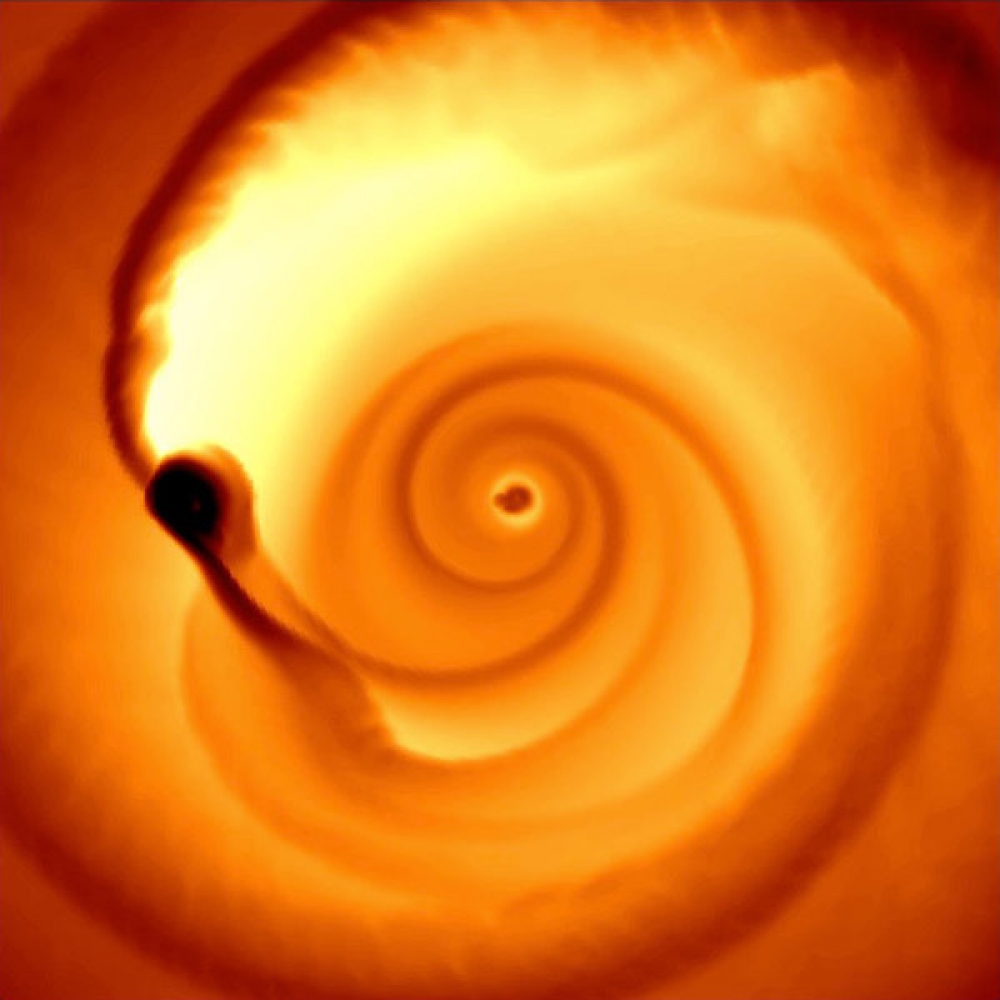More Evidence for Coming Black Hole Collision

An illustration of two black holes orbiting one another. The black hole in the center of the image is starved of gas by the black hole at the left, making the gas cloud of the black hole on the left brighter.ILLUSTRATION BY ZOLTAN HAIMAN, ADAPTED FROM FARRIS ET AL. 2014
By DENNIS OVERBYE
SEPTEMBER 16, 2015
The apocalypse is still on, apparently — at least in a galaxy about 3.5 billion light-years from here.
Last winter a team of Caltech astronomers reported that a pair of supermassive black holes appeared to be spiraling together toward a cataclysmic collision that could bring down the curtains in that galaxy.
The evidence was a rhythmic flickering from the galaxy’s nucleus, a quasar known as PG 1302-102, which Matthew Graham and his colleagues interpreted as the fatal mating dance of a pair of black holes with a total mass of more than a billion suns. Their merger, the astronomers calculated, could release as much energy as 100 million supernova explosions, mostly in the form of violent ripples in space-time known as gravitational waves that would blow the stars out of that hapless galaxy like leaves off a roof.
See full text